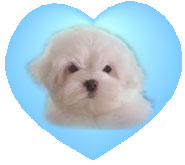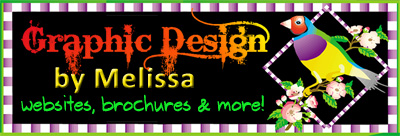
 |
About Our Maltese |  |
Breed Description |  |
PUPPIES! |  |
Goldens |  |
Bernese Mtn. Dogs |  |
Goats |  |
Home |  |
Contact Us |

Grooming Your MalteseHere are a few tips on properly grooming your Maltese. We hope you find them helpful!
Maltese Ears Maltese dogs are susceptible to bacterial and fungus infections. Your Maltese will get excessive hair in and around the ear canal. You should have the hair removed to allow air to circulate. This can be done when a dog is professionally groomed, but may also be done at home. To remove the hair, sprinkle baking soda on your fingers (be careful not to get it in the ear canal!) or use ear powder, available at pet supply stores. If you use ear powder, sprinkle a small amount on the ear canal making sure to cover the ear hair. Holding the ear flap up with one hand, use your fingers to gently pluck out the hairs growing in the ear canal. Most Maltese will not mind this because it does not hurt. Don't pull any hairs on the inside of the ear flap, however! If your Maltese ears are clean, without excess wax and not oversensitive to touch, you do not need to clean them. Dirty ears or ears filled with a waxy, dark substance may be an indication of ear mites. Use cotton balls (never use Q-tips which can impact or push material even further into the ear!) dampened with mineral oil, hydrogen peroxide or ear cleaner for dogs. Holding the ear flap in one hand, wipe the inner surface of the ear as far down as you can reach. Be gentle but thorough, changing the cotton when it is soiled. Before cleaning extremely dirty ears, make sure that you have ear cleaner and lots of cotton balls close at hand. Either hold your Maltese still on a grooming table, grip him between your knees, back him up against a corner or hold him on yo ur lap with his head facing away from you. Follow the directions on the bottle and fill the ear with ear cleaner (make sure it is not too cold!). Massage the base of the ear for a few minutes and then swab out the ear with the cotton balls, using clean cotton for each ear. Your Maltese will want to shake out the excess ear cleaner, so get out of the way before he does, or you will be sprayed! Preventative Ear Cleaner:
Instructions on use Treatment of an existing infection How it works Trimming The Toenails & Hair Between The Toes If your pup is very young, at 6-8 weeks, for example, it is of paramount importance to clip the nails every week - just after a bath is the best time when the nails are soft. Trimming the hair from between the toes can be done at least every other week. I know this is not a "glamour question", nobody ever wants to know about toenails - but that is just the point of all of this. A young pup especially, and to a degree older dogs as well, must have good solid footing for the musculature and bones to grow, knit, and mature properly. A dog with untrimmed nails and hair growing so thick between its toes that it is slipping and sliding (especially on hard flooring) must overcompensate with exaggerated movements in order to maintain its balance and propel itself around. By ignoring this simple and quick grooming regimen you may cause your pup to develop an unnaturally poor movement in its front as well as to cause the toe pads to become "splayed" prematurely in your pet's life. Sorry, but I just felt compelled to address one of those often overlooked and "never asked" points that seem to never get covered by new Maltese puppy owners and the pup's breeders. Maltese Toenail Care If you accustom your puppy to having his feet handled, you won't have problems with clipping his nails as an adult. Teach him to sit and to hand you his paw while you clip each nail. Adult dogs who are unused to having their feet handled may wiggle too much and you risk painfully clipping the quick. Try turning your Maltese upside-down on your lap while you're sitting on the couch. With you in a dominant, more commanding position, he is less likely to squirm and his nails will also be more accessible. For some adult dogs, however, it is better to make a nail clipping appointment with your vet or groomer rather than wear yourself out or risk hurting him. Purchase dog nail clippers at a pet supply store. Kinds available include "guillotine" style and scissors style. The guillotine style has replaceable blades and the scissors have a notch cut in the blade to fit the nail. Never use human clippers which can split and injure the nails. Dogs have thick nails, so be sure your clippers have sharp blades. Have a styptic pencil, flour or cornstarch on hand in case you accidentally nick a quick. Clip your Maltese nails under good lighting. Most Maltese nails are white or light colored, and the darker area of the quick is unmistakable. However, some Maltese have dark nails and the quick is not visible. In this case, clip only the ends of the nails. You may have to cut them more frequently to achieve a proper length. Cut at a perpendicular (90 degrees) angle to the nail. Remember to also clip the nail of the dewclaws (if your Maltese has not had them removed as a puppy), the fifth nail on the upper inside of its ankle. Maltese have dewclaws only on the front feet. After you clip them, filing the nails with a human or dog nail file helps to smooth the sharp edges. Removing Mats This can be tedious process but hopefully it will work for you and eliminate the need to have to cut the mat out leaving a hole in the coat of your Maltese. Sometimes a mat can get so bad that this may be your only recourse. Alternate between separating the mat with your fingers and separating it with the end tooth of your comb. Never try to pull the entire mat out at once with the comb or brush. Make sure all mats are removed prior to bathing your Maltese as mats tend to get worse (tighter) when set in water. Bathing your Maltese A good quality shampoo and conditioner, such as ones made by "coat handler" I would recommend. Its pricey but a gallon will go a long, long way. After bathing, the natural oils will quickly return to the skin and coat. Apply dabs of shampoo to the back, each leg and under the tail of your puppy. Work up a good lather down to the skin, proceeding from back to front. Take special care to clean the anal area and paw pads. Rinse the coat thoroughly and shampoo again. Rinse again. Wash your puppy's face with a washcloth. Coat handler products are totally "tearless" so baby shampoo isn't necessary when using their products. If using something else, take great care to avoid the eyes. Tip the head up to rinse. RINSE every part of your puppy's body until all traces of soap are gone and the water runs perfectly clear. This step is very important because any remaining residue will irritate your Maltese skin and make the coat dull. At this point, you may add a conditioner. If you choose to use "coat handler", this is a 'leave in' conditioner, it is also a detangler, antistatic and fragrance--all in one. Work it into the coat well. At this time, any minor knots can be relaxed with a little extra conditioner. Using your hands, squeeze the excess water from the puppy, paying particular attention to ears, tail and legs. Run your hands down your puppy's body to "squeegee" water from the rest of the coat. Cover your Maltese with a towel. Use as many towels as are needed to get your dog to the "damp-dry" stage. During colder weather, you may want to dry your puppy in a small room (bathroom or laundry room) with a space heater. Make sure your puppy does not get chilled and is perfectly dry before you let him outside in cool or cold weather. You might want to use a hand held dryer. The noise may scare the puppy at first so this method may or may not work for you. Or, better still, except for the noise at first) use a free-standing canine dryer that leaves your hands free. Make sure the dryer is not too close to your puppy and temp is set on WARM and the dryer temperature is NOT TOO HOT. Using a pin brush, brush the coat carefully in the direction the coat grows while blowing in order to straighten any waves or kinks and reach all layers of the coat. Do small sections at a time, making sure each section is dry before continuing on to another. Continue brushing and blow drying the whole body, taking special care to completely dry ears, feathering and feet. Blow Drying When drying the coat, do one section at a time thoroughly before moving on to another. Its best to use a slicker brush on the lower part of the legs and the feet. Brushing needs can vary considerably depending upon length of the hair, as well as your dogs behavior and environment. The most important time to brush your Maltese is after his/her bath, when the coat is just damp out of the towel. Snarls are most likely to give up to the brush when they are washed, rinsed with conditioner and not yet dry. After a bath, always brush and comb the dogs head and feet when he is towel-wrapped to do his ears, eyes, teeth and toenails. The face should be done last using a metallic comb (small). Parting Teeth Cleaning Puppies are open to new experiences, so they are more likely to accept brushing than older dogs and will continue to do so into their adult lives. To start your Maltese puppy out, rub its teeth and gums with your finger for a few days. Adding some soft dog food to your finger may help to make the experience more pleasent if necessary. After a few days, switch to a small amount of toothpaste on your finger and continue to rub. The next step is to use a soft-bristled toothbrush. If the puppy rejects this, add the soft dog food to the brush and later switch to the canine toothpaste. Brush the teeth and gums gently. A circular motion is most effective, but brushing back and forth is easier. |

Back
Breed Description
PUPPIES!
Goldens
Bernese Mountain Dogs
Goats
Home
Contact Us
URL: http://www.patchofheaven.us
